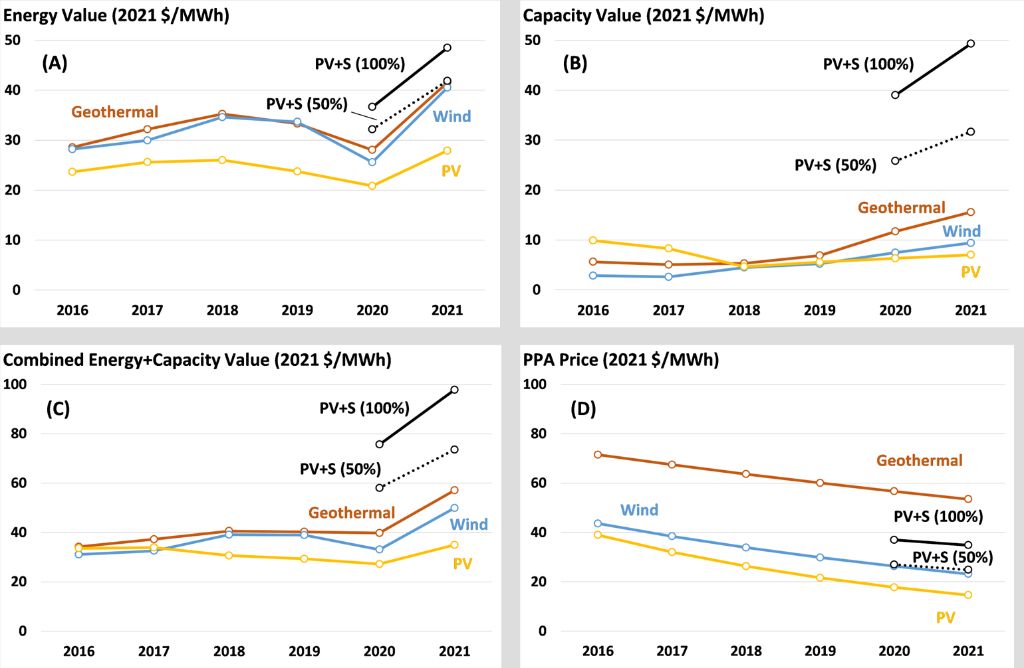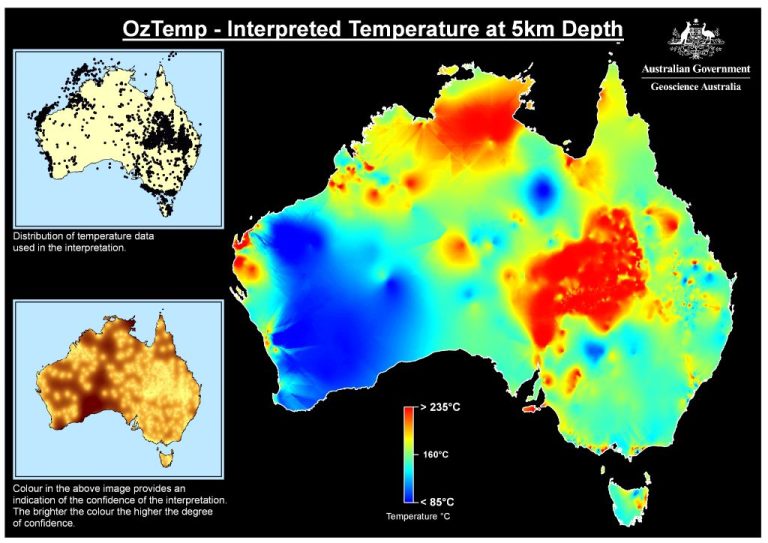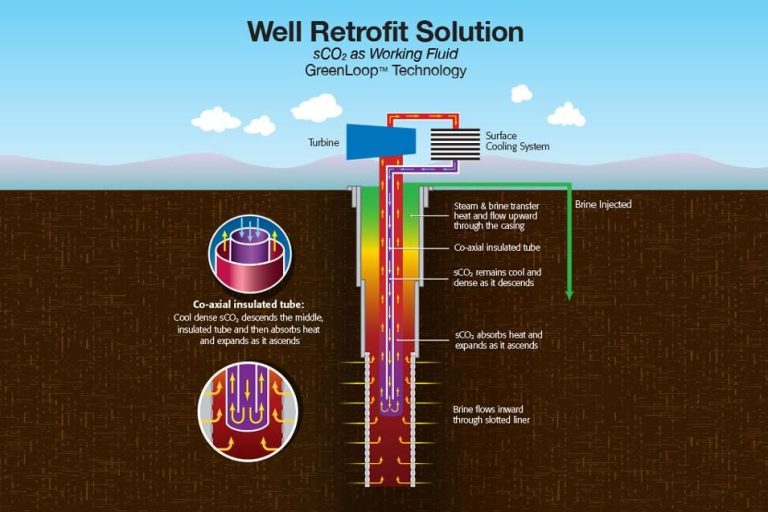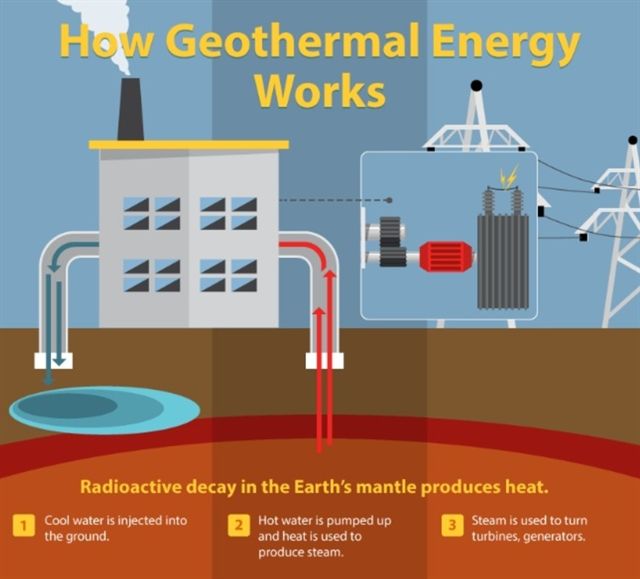Is Geothermal Energy Cheaper Than Solar Energy?

Both geothermal and solar energy are renewable energy sources that provide an alternative to fossil fuels. Geothermal energy harnesses heat from within the earth, while solar energy captures energy from the sun. When evaluating which renewable energy source to invest in, cost is often a primary factor.
The thesis of this article is that geothermal energy is generally cheaper than solar today based on current costs, but solar costs are dropping rapidly while geothermal has geographic limitations on wider availability.
Definition of Geothermal and Solar
Geothermal energy is thermal energy generated and stored in the Earth. The geothermal energy originates from the original formation of the planet and from radioactive decay of minerals (1). Water and/or steam carry the geothermal energy to the surface through geothermal wells or hot springs. A geothermal power plant converts the heat into electricity by using steam to power a turbine which activates a generator (1).
Solar energy is the radiant energy emitted from the sun that is converted into thermal or electrical energy (2). Solar panels, also known as photovoltaic (PV) systems, absorb sunlight and convert it into usable electricity. The electrical current generated can then be used directly or sent into the electrical grid (2).
(1) https://www.twi-global.com/technical-knowledge/faqs/geothermal-energy
(2) https://www.eia.gov/energyexplained/solar/how-solar-panels-work.php
Geothermal Cost Factors
One of the biggest cost factors for geothermal energy is drilling and exploration. According to Sanyal of Stanford University, “drilling costs constitute up to 50% of the capital cost of a geothermal power plant” (Sanyal, 2004). Geothermal plants require drilling deep wells, sometimes up to 2 miles deep, to access the high temperature steam and water needed to generate electricity. This makes the drilling process expensive and risky. If no viable resource is found during exploration, the project cannot proceed. According to Sanyal, a single geothermal well can cost $1-3 million on average.
Solar Cost Factors
The main components that factor into the cost of solar panels are the solar panels themselves and the installation. According to Energysage, the average cost of solar panels in the U.S. is around $2.86 per watt before incentives as of January 2024 [1]. For a typical 6 kW residential system, that equates to $17,160 just for the solar panels. Installation costs then add another 25%+ on top of that.
However, solar panel costs have been dropping dramatically over the past decade. According to data from the EnergySage Marketplace, solar panel costs have fallen by over 70% since 2010 [2]. This downward trend is expected to continue as technology improves and solar energy scales up globally. Lower solar panel costs mean residential systems are becoming more affordable for homeowners looking to go solar.
Levelized Cost of Geothermal vs Solar
The levelized cost of energy (LCOE) is a metric used to compare the overall costs of different energy generation technologies over their lifetime. According to recent analysis by the International Renewable Energy Agency (IRENA), the global weighted-average LCOE of geothermal power was around $0.056 per kWh in 2022, a 22% decrease from 2021 costs [1]. In comparison, the LCOE of utility-scale solar PV was around $0.039 per kWh. This analysis shows geothermal energy is currently more expensive than solar energy on a per kWh basis.
Some key factors leading to the higher LCOE for geothermal include the high upfront capital costs for drilling and plant construction, the risks associated with resource exploration, and the smaller scale and less modular nature of geothermal plants compared to solar farms. However, geothermal has the advantage of providing consistent baseload power, while solar is intermittent and needs storage or backup capacity.
Looking ahead, IRENA projects the LCOE of geothermal could fall to around $0.039/kWh by 2030, reaching parity with solar. This would be driven by technological improvements and scaling up project sizes and production volumes. However, geothermal is likely to maintain a cost premium in most locations due to geology and resource constraints.
Upfront Costs
The upfront costs associated with geothermal energy are significantly higher compared to solar energy. The high costs are largely due to the drilling required for geothermal systems. Installing a geothermal heat pump typically costs between $20,000 – $25,000 on average (1). This covers the ground loop drilling, heat pump unit, piping, and installation labor. Drilling hundreds of feet into the earth accounts for around half of the total installed cost. In comparison, the average cost of a residential solar panel system is around $15,000 – $25,000 depending on the size and solar incentives available (2). Since solar panels can be mounted on rooftops or ground mounts, they avoid the expensive drilling costs.
The drilling component has historically made geothermal systems hard to cost justify for residential homes, especially in the past when energy prices were lower. However, due to rising electricity rates and improving geothermal technology, payback periods are becoming more attractive (3). Regardless, the high drilling costs make geothermal energy have substantially higher upfront costs compared to solar in most cases.
Ongoing Costs
One advantage of geothermal energy systems is their relatively low ongoing costs compared to solar PV systems. According to Energysage, the average yearly maintenance cost for a geothermal system is about $300, which covers minor component replacements and annual checkups. The ground loop generally doesn’t require maintenance and can last over 25 years.
In contrast, solar PV systems have more significant ongoing expenses. Solar panels need to be cleaned periodically, typically costing $150-250 per cleaning. Inverters also may need replacement after 10-15 years, costing several thousand dollars. Overall, Energysage estimates the yearly cost for solar PV maintenance at $100-250, not including inverter replacement costs.
According to research by Oliver Heating and Cooling, the ongoing costs of geothermal systems are about 25-50% lower than comparable solar PV systems. Geothermal’s relative simplicity and durability makes it cheaper to operate and maintain in the long run.
Sources:
Solar vs. Geothermal Energy: Which Is Right For You? – Energysage
Geothermal vs. Solar: Which Is Right for You? – Oliver Heating and Cooling
Availability and Scalability
One of the key differences between geothermal and solar energy is the availability and scalability of each technology. Geothermal energy is limited by suitable geothermal resources, which are only found in certain locations where there is enough heat under the Earth’s surface. In contrast, solar energy can be scaled and deployed virtually anywhere sunlight is available. This article notes that geothermal systems using subsurface waters can be scalable for large infrastructure, but are still geographically limited. This source also discusses the challenges of scaling up geothermal beyond relatively small operations.
Solar photovoltaics and solar heating, on the other hand, can be installed on rooftops, parking lots, and open land nearly anywhere with sufficient sunlight. Solar is highly modular and scalable, with systems sized from small residential to utility-scale. This greater scalability and lack of geographic constraints gives solar energy much more potential to continue rapid growth and expand its share of electricity generation.
Future Cost Projections
While geothermal costs are expected to remain relatively stable, the costs of solar power are projected to continue falling in the coming years. This is due to a few key factors:
– Improvements in solar panel technology and manufacturing techniques that increase efficiency and lower costs.
– Economies of scale as solar production expands globally. More panels being made leads to lower unit costs.
– Further industry maturation and competition driving down supplier/installer profit margins.
– Continued advancement of battery storage technologies paired with solar that increase value.
Most analysts forecast that solar PV system costs will fall an additional 10-20% by 2025 and up to 50% by 2050. This would make solar even more cost competitive with conventional and renewable energy sources.
In contrast, geothermal costs are not expected to fall nearly as dramatically given the maturity of the technology and geological limitations. There will likely be moderate cost reductions, but solar will maintain the advantage on costs moving forward.
Conclusion
In summary, geothermal and solar energy have both seen dramatic decreases in costs in recent years. However, geothermal tends to have lower overall lifetime costs compared to solar PV. The main factors driving geothermal’s cost advantages are no fuel costs, lower operations and maintenance costs, and higher capacity factors. This makes geothermal a reliable and cost-effective baseload renewable generation source.
That said, solar PV scales more easily and has seen rapid declines in installed costs, making it competitive in many applications as well. The outlook for both technologies remains strong, with continued cost reductions expected through technological improvements and market expansion. The growth of affordable renewable energy sources like geothermal and solar will be key in transitioning away from fossil fuels and building a sustainable energy future.
Overall, the cost picture clearly shows that renewable energy is becoming cheaper and more cost competitive with conventional sources. Both geothermal and solar will play major roles in decarbonizing the electricity sector going forward.





